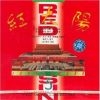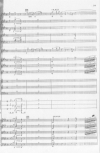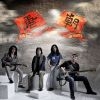
Illustration:
ill. 2.5 d (set: 2.5)
Author:
Zhao Dadi 赵大地
Date:
ca. 2003
Genre:
CD cover, music
Material:
photograph, colour; original source: CD cover, colour
Source:
Red Songs of Praise 红色赞歌 (Private copy/photograph), ca. 2003.
Courtesy:
Barbara Mittler
Keywords:
Red Sun Fever, red sun, Mao Zedong, popular culture, Chinese pop music, Mao Cult, hero, nostalgia, rock music, Mao memories
Red Songs of Praise (Hongse zange 红色赞歌)
Pop and rock versions of the old revolutionary songs praising the sun began flooding the Chinese music market since the late 1980s, a trend which culminated in the so-called “Red Sun Fever,” 红太阳热 around the centenary of Mao’s birthday in 1993: millions of tapes and CDs with pop, rap, jazz and rock versions of the old songs in praise of Mao were being published almost by the day. Within a few months in 1991 more than one million copies sold, 14 million by 1993, 72 million by 2006 and 80 million by 2008: the movement has not subsided, to the contrary (Barmé 1999:186; Lee 1995:99, see 2.5 a).
One of the more ingenious variations of “Red is the East,” Zhao Dadi’s 赵大地 (1965-) remake, mixes elements from Chinese folksong, suona 唢呐 playing, Chinese gongs, Hammond organ and pop strings, and appears on a CD produced from a Tianjin concert of 2003 in memory of Mao’s 110th birthday, entitled Red Songs of Praise 1 红色赞歌 1 (see 2.5 d, mus. 2.5) Even in this exuberant version, with the interjected howls and cheers so typical of Chinese folksong, and thus slightly lacking the seriousness and devotion which had been part and parcel of earlier propaganda and pop versions of the song, in the end, the musical message, can still be considered to be one of reverence, or, at least, of everlasting memory.



































